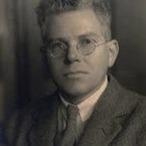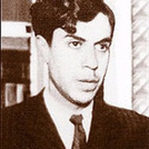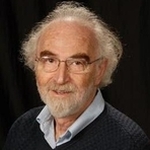|
It's great when you get to know about a singer still on their way towards the big time, rather than once they've hit the top. You get to see the progress they make, and the artistic choices they take. You get to see them perform with perhaps a little more edginess and with a greater willingness to take risks. Plus, you get to see them for a reasonable price :) But seriously, I was wandering through the annals of YouTube searching for some serious Tenor coloratura (sometimes it just needs to be done) and I found this video of Bogdan Mihai performing the ridiculously difficult aria "Cessa di piu resistere" from Rossini's opera Il Barbiere di Siviglia. It is Almaviva's last aria in the opera, and there are not that many Tenors around that can do it justice. Imagine my surprise when I heard it performed immaculately by someone I had not yet heard of before. The Bb maj aria starts abruptly at 0:54 with a demi-semi-quaver run from the unison strings, launching the Tenor into a perfect cadence through the major triad stepping down from the dominant to the tonic via the mediant. The A section has the tenor leaping or running mostly between F3 and A4, with some quick-running key modulations during the semi-quaver and demi-semi-quaver coloratura. Mihai deals with this easily, resorting neither to heavy aspiration nor to slurring. One particularly horrible bar of coloratura is placed squarely around the G4 mark with a throw-away Bb4 chucked in just for fun. Yet Mihai is completely unphased by this rather evil piece of Rossini writing, and drives onwards towards the next section. Remember, this is a Tenor aria, the last one of the opera, and this is only the A section! The B section modulates into Db maj, and is marked Andante. The melodic line here is a particularly lovely one, moving from the Dominant, to the Mediant, to the Leading Note, and finally onto the Tonic. The effect is that of a slow dance; a playfulness in the vocal line which matches the sentiment of the libretto: "Forget now thy days of tyranny/ Look up, my fairest treasure, Let us enjoy in liberty/ Long days of love and pleasure!" Mihai uses the lightest touches to run between the various arpeggios, and opens out to a fuller resonance on the Ab4 which highlights the word "fairest" in the phrase above. The next part of the B section is the exquisit use of demi-semi-quaver hexlets and hemi-demi-semi-quaver descending runs on each syllable in the line: "All sweet delights and blessings/ Will love upon thee show'r" The use of these runs is to musically alliterate the verb "to shower" which ends the line. Mihai's speed, flexibility and agility imbues this most wonderful compositional device with both sweetness and enchantment: refusal is not an option! Of course, the word "blessings" is the highlight of the phrase, and as such receives an ascending coloratura run up to Ab4, just as the word "fairest" did in the previous phrase. To finish with, the final perfect cadence on the repeat of the word "showr'd" drops to Db3, the lowest note in the whole aria. The final section is pure Rossini - a joy to listen to but absolute hell to sing! Extended coloratura at break-neck speed, chromatic ascending and descending runs, Bb4's galore, and the tessitura is firmly around the G4 mark for the whole section. Mihai takes all of this in his stride, and sings with the ease of one performing a renaissance madrigal. The final Bb4, interpolated as opposed to written, but expected nonetheless, is solid and resonant, and perfectly concludes this awesome aria. The vocal fach that this aria was conceived for is that of the Leggiero Tenor, or the Tenore di Grazia. This is the highest of all the Tenor sub-divisions, and is effectively the equivalent of the Coloratura Soprano. It is also the successor, in male operatic terms, of the great Castrati - if you compare arias like this to those written for Senesino, such as "Al lampo dell'armi" from Handel's Giulio Cesare, it is easy to see this to be the case. So how is it that Mihai, an obvious Leggiero Tenor, started his career as a Baritone? Well, this is not as difficult to understand as it may at first seem. In the vocal structure of the Leggiero Tenor, there are two distinct voices: the chest voice and the head voice. The head voice in the Leggiero Tenor can often sound much like a falsettist, as if the singer is no longer singing in his modal voice. Also, the chest voice of the Leggiero Tenor usually sounds well developed and resonant much earlier than the head voice. Thus, it is quite common for this rare male voice to start its life as a Lyric Baritone, or even lower, and stay thus until such a time as the head voice is stronger and recognized for what it truly is. It was the great Soprano Mirela Freni, with whom Mihai was training, that first discovered that a potential Leggiero Tenor was ready to face the world stage. Mihai says the following in an interview with the team at Rosenblatt Recitals (click here for the full interview): "Changing the tessitura was quite unexpected and it was a very difficult decision to make. I had been singing as baritone for 8 years by then. After graduating from the Academy of Music in Bucharest I auditioned for a masterclass with Mirella Freni in Italy. Presenting myself as baritone, I got the most surprising reply: – “Per me non sei baritono, sei tenore...se vuoi entrare nellá mia accademia, devi cambiare la tessitura vocale…” (“You look like a tenor to me, not a baritone… if you wish to attend my academy you must change your tessitura…”). I learnt a lot from soprano Mirella Freni. One of the most important things was repositioning the voice to the tenor range, acquiring the luminosity in a voice that had been trained as a different tessitura (baritone)." Mihai went on to have success in Rossini’s La Cenerentola, and in the roles of Percy in Anna Bolena, Leicester in Maria Stuarda and Roberto in Roberto Devereux by Donizetti. He also premiered in England the roles Goffredo and Carlo in Rossini's Armida. Most recently, Mihai performed as part of the Rosenblatt Recitals Series held at the Church of St. John's, Smith Square. Here he reprized the aria of Count Almaviva, and he also performed arias by Vinci, Caccini, Carissimi, Mozart and Donizetti. Unfortunately I was unable to attend the recital, but the team people at Rosenblatt Recitals have posted a few videos of the arias on their YouTube site, as well as on their website (see Mihai's archived page). Both Juan Diego Flórez and Lawrence Brownlee have performed as part of the Rosenblatt Recitals Series, making the series a key barometer in the world of the Leggiero Tenor (as both Flórez and Brownlee sing in this fach). I predict that we will be hearing many great things from this wonderful Tenor, and that the opera world has acquired yet another excellent Leggiero Tenor. Mihai will be performing in Mozart's Requiem (K626) at St Joseph Cathedral Bucharest on 13th April 2011. The next Rosenblatt Recitalist will be Soprano Elizabeth Llewellyn, on the 13th April 2011, and I will definitely be going to see her perform. I shall leave you with a couple of videos from the Recital. The first is "Dalla sua pace" from Mozart's Don Giovanni, and the second is Mihai's encore: "Poate ca n-am iubi atat" by Mauriciu Vescan.
1 Comment
|
MOST VIEWED POSTS
© James Edward Hughes 2013
 RSS Feed
RSS Feed





